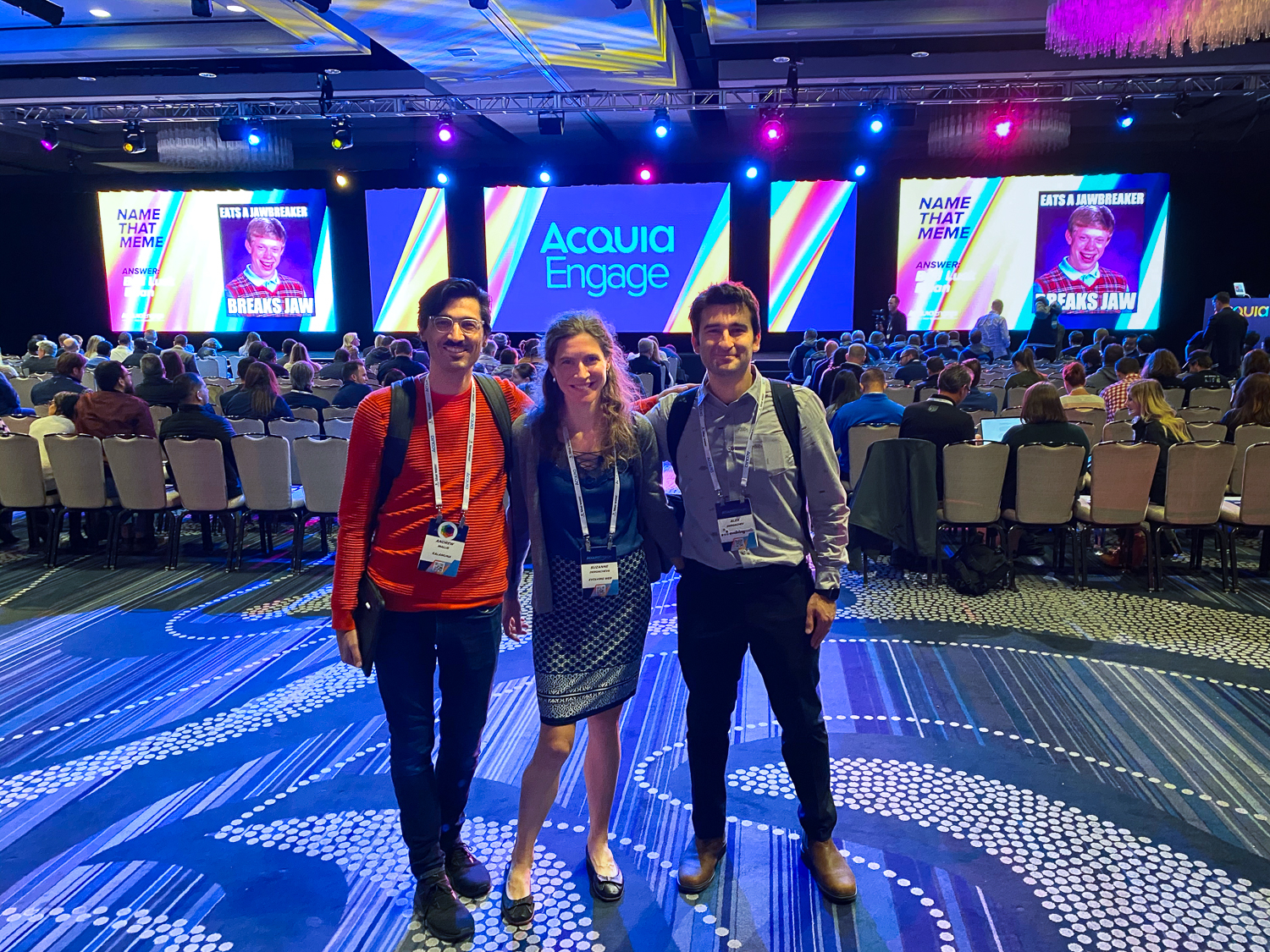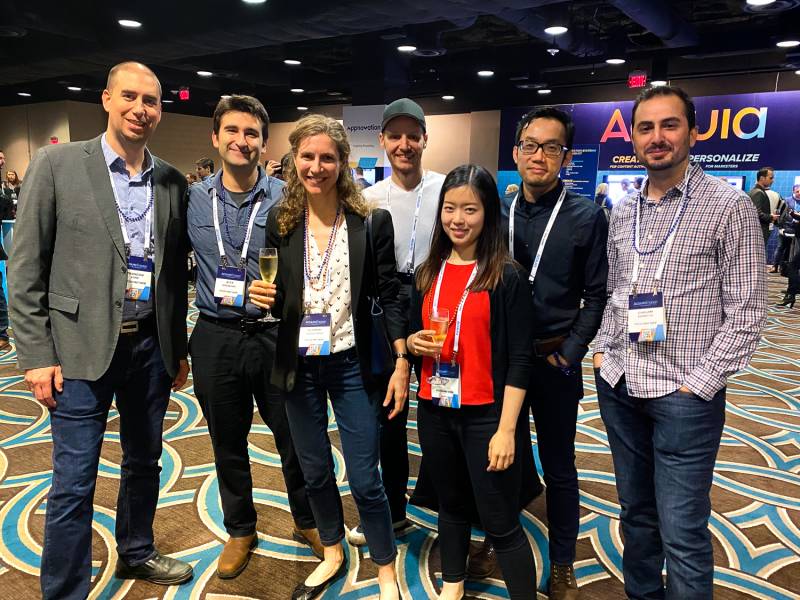
Evolving Web attended Acquia Engage in New Orleans last week, an exciting and informative three-day conference where we learned a lot about how different companies are thriving in an evolving digital landscape. We were also sponsors of the event and presented a session on how to create more effective personalization by combining UX research and a strong content strategy. Aside from the fact that New Orleans has great food, music, and people, here are other takeaways from our time in the Big Easy.
Everyone wants personalization, but not everyone knows what it means.
Personalization was a recurring topic throughout the conference. Awareness isn’t the issue. The real challenge is in defining what personalization means. Personalization, at the end of the day, means something different to everyone.
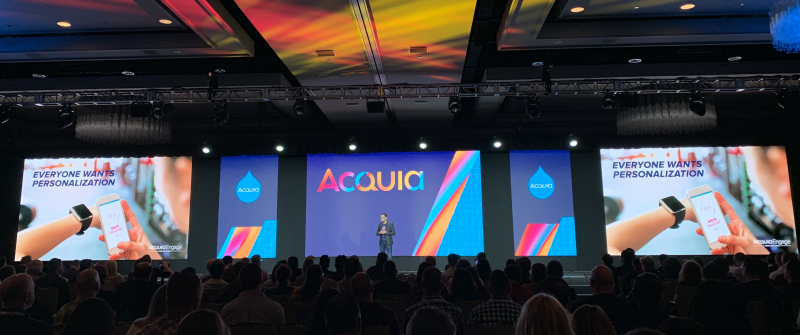
As Mark Grannan, Senior Analyst at Forrester remarked at his “The State of DX” keynote, it’s important to define what personalization means to your organization. For example, does personalization mean having the right hero image on your website? Or does it mean launching better omnichannel marketing campaigns? And which components, such as your key navigation or anchor content, should stay consistent regardless of who’s on your page?
Getting clear about what personalization means for your organization will allow you to improve your existing marketing strategies and select the right KPIs to measure success.
Always start with humans.
Drupal is a complex and robust CMS that allow you to create truly novel digital experiences. With all the attention on maximizing its technical capabilities, it can get easy to lose touch with the main purpose of your website, which is to help your users achieve their goals.
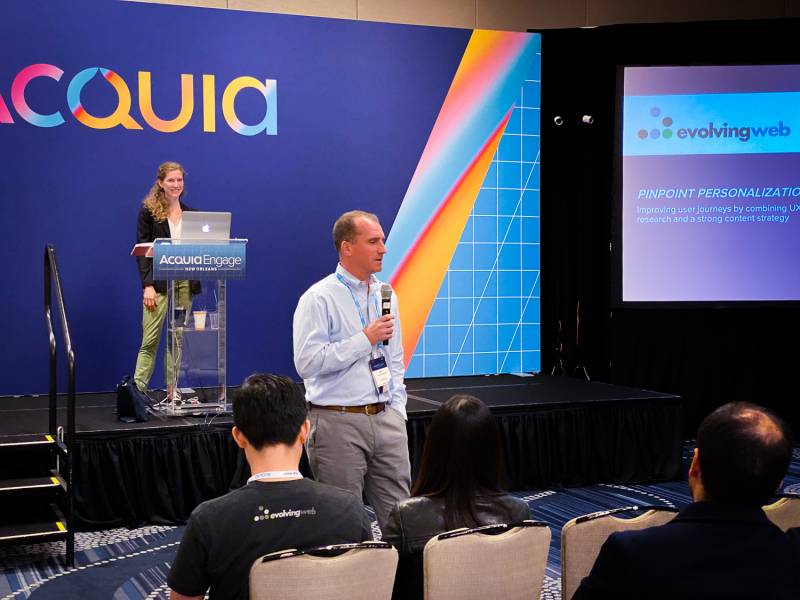
Leah Sand, Founder and Practice Lead of the Content Studio Department at VMLY&R, shared this important reminder in a keynote on what she learned about design from architecture: “Technology exists to make our lives better. Start with humans first.” In her talk, Leah explained how all values for technology stem from human needs and goals, and how the best architects approach every design by asking, “What do we want to do with this building as a human being?”
Keep your focus on the user. Consider the problems they’re trying to solve by engaging with your online touchpoints and use this understanding to build digital experiences that satisfy their needs.
Focus on an integrated strategy, not tactics.
Everything, from your website, apps, social media channels, and print content, should feel like a continuous experience. Just like how personalization has become a consumer expectation, users expect you to know where they are on their journey and to guide them to the services and products they want. While many companies are doing some piece of digital marketing—like a newsletter, Twitter feed, or paid campaigns—these tactics aren’t effective unless they are united under a clear strategy that takes into account how each piece helps your organization achieve key goals.

Community Health Network, an Indianapolis-based health system that provides access to healthcare services across hospitals, workplaces, homes and more, discussed in their session how they blended technical, content, and marketing skills to create an integrated system that helped them meet their KPIs. They used consumer data, industry reports, and in-person interviews to create user personas, then created personalized content across online and offline channels to satisfy the needs of these personas, such as information on insurance costs and where to get screenings. Using Acquia Lift, they experimented with personalized hero images, descriptions, and content slots, and tracked the effectiveness of CTAs to improve their messaging and reach their goal of increasing mammogram screenings by 3%.
When creating your strategy, consider the entire user experience and think about how every channel can meet the user where they are.
Design for the present and improve for the future.
Any technology solution you implement in the present should be deployed based on what you can do today, with the goal of scaling in the future.

Shaun McDougall from Leidos, a multi-billion dollar aviation, IT, research and defense company with over 30,000 employees worldwide, talked in a session about how improving their content management and lead generation was a complex challenge given the scope of the company and the quick pace of change in their industry. The company spent months identifying the best platforms to use, performing internal audits, and planning for long-term growth. They worked with R2integrated and Acquia to modernize their backend, improve their digital and user experiences, and centralize their content and operations. To adjust their teams to a more centralized system, they invested in re-education, documented the process, and reassured all stakeholders that although innovating was gradual, it was eventual.
While the team was able to leverage many Acquia tools (Acquia SiteFactory, Edge Protect, and Lift, to name a few) to quickly build pages and improve their marketing efforts, Shaun admitted that they tried too much too soon. For example, instead of launching a new website while deploying Lift at the same time, Leidos should’ve done segment launches, which would’ve allowed them to better prioritize their goals and tasks. And although the reinvention of the company was a success, Leidos is still improving their processes and scalability every day.
When the scope of your website or online presence is large, consider which goals are short-term and which are long-term, and prioritize accordingly. While there are many tools available from Acquia that can help you speed up change, they will only be effective if your time frames are right.
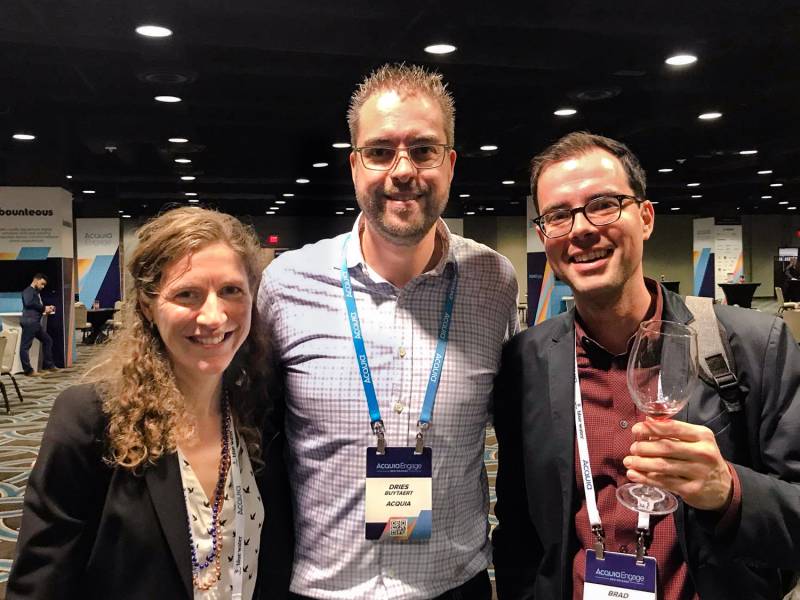
We had a great time at Acquia Engage and hope to see you next year!
